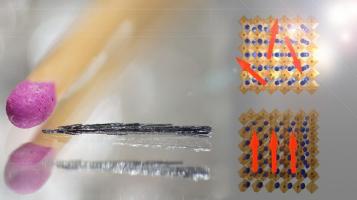EPFL scientists have developed a new perovskite material whose magnetic order can be rapidly changed without disrupting it due to heating. This novel material may potentially be used to build next-generation hard drives.

The EPFL team synthesized a ferromagnetic photovoltaic material. This material is a modified version of perovskite, that exhibits unique properties that make it particularly interesting as a material to build next-generation digital storage systems. The researchers explain that they have basically created the first magnetic photoconductor; This new crystal structure combines the advantages of both ferromagnets, whose magnetic moments are aligned in a well-defined order, and photoconductors, where light illumination generates high density free conduction electrons.
The combination of the two properties reportedly produced an entirely new phenomenon: the "melting" of magnetization by photo-electrons, which are electrons that are emitted from a material when light hits it. In the new perovskite material, a simple red LED - much weaker than a laser pointer - is enough to disrupt, or "melt" the material's magnetic order and generate a high density of travelling electrons, which can be freely and continuously tuned by changing the light's intensity. The timescale for shifting the magnetic in this material is also very fast, virtually needing only quadrillionths of a second.
Though still experimental, all these properties mean that the new material can be used to build the next generation of memory-storage systems, featuring higher capacities with low energy demands. "This study provides the basis for the development of a new generation of magneto-optical data storage devices," according to the team. "These would combine the advantages of magnetic storage - long-term stability, high data density, non-volatile operation and re-writability- with the speed of optical writing and reading."

